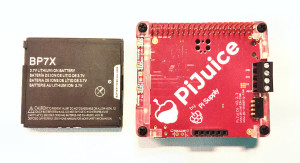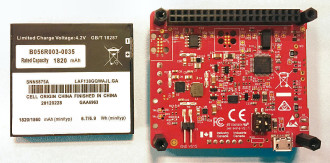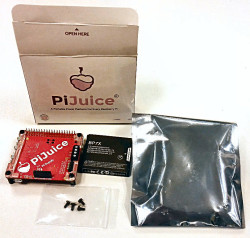PiJuice — Uninterruptable Power Supply for Raspberry Pi
on
No power adapter
Using the PiJuice from PiSupply you can use your Raspberry Pi without a mains power adapter. Or for a while anyway. It has been designed as a UPS (Uninterruptable Power Supply) and can ride through several hours. The supplied battery, which is rated 1820 mAh, will, according to the makers, hold up the Raspberry Pi 3B+, the most power-hungry member of the Raspberry Pi family up to now, for about 4 to 6 hours, depending on the load on the processor of course. And if that is not enough, the additional headers on the board make it very easy to add battery capacity using bigger batteries. Here is a spreadsheet with some measurement results for different batteries, to give you an idea of the possibilities (click to enlarge).
We have to note here, that in our duration tests the results were between 1.75 and 3.25 hours, depending on the load (1.25 hours YouTube 1080p + 0.5 hours idle, respectively without keyboard & mouse, WiFi and Bluetooth switched off, idle, HDMI connected), measured using the supplied BP7X battery. During the test the indicated percentage of the charge remaining jumped up and down quite a lot and didn't appear all that accurate. This problem is known to the developers and on GitHub you can read that we're not the only ones to notice this. The problem is, according to PiSupply, in the measurement: during charging the accuracy is lower because of the higher load current that is the result of the internal resistance of the protection circuit in the BP7X battery.HAT on
The PiJuice is configured as a HAT for the Raspberry Pi and plugs without any problems onto the 40-pin RPi header. No need to bother with cables – Great! The basic functionality of the PiJuice works out-of-the-box without software or whatnot, but only after you install the software do you have access to all the features that the designers have endowed it with.


Status LEDs
PiJuice is provided with a tri-colour LED which indicates the state of the battery as follows:
- Not connected to a Raspberry Pi:
- Flashing green: standby
- Flashing blue: charging
- Flashing red: Low battery
- Connected to a Raspberry Pi:
- Green: connected, more than 50% charge remaining
- Flashing blue: charging
- Solid blue: 100% charged
- Red: less than 50% remaining or no battery connected





Discussion (0 comments)